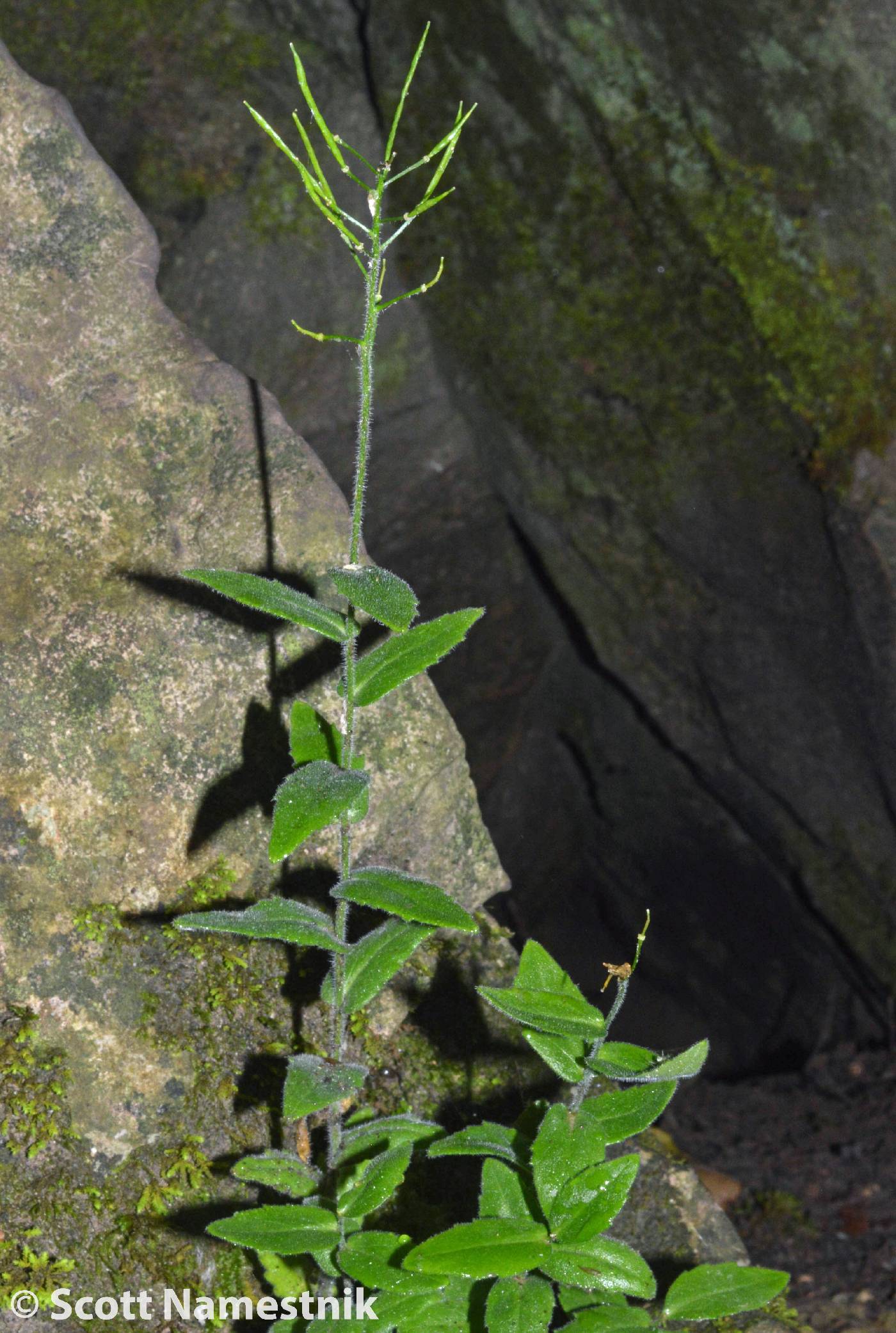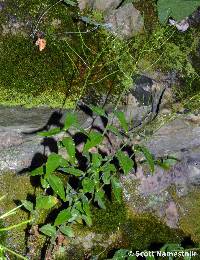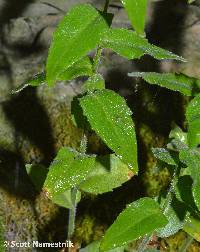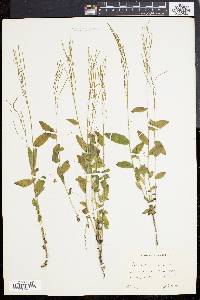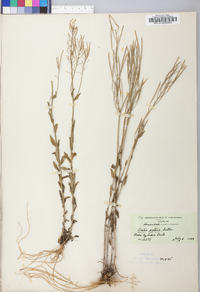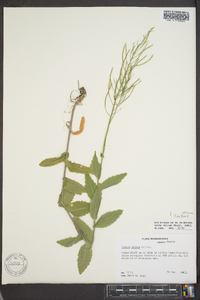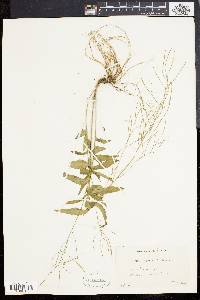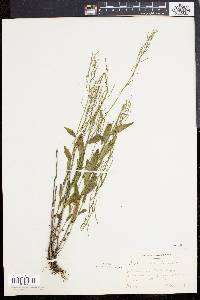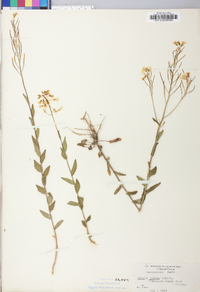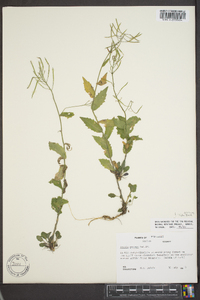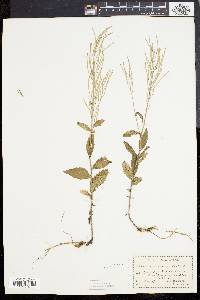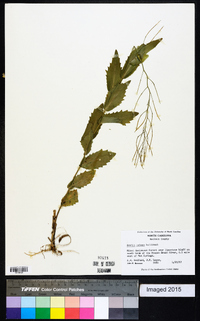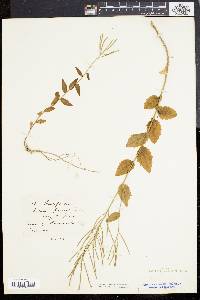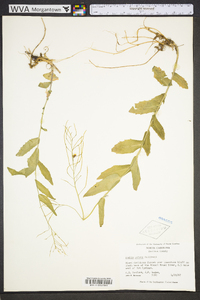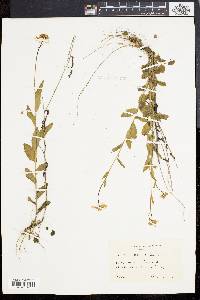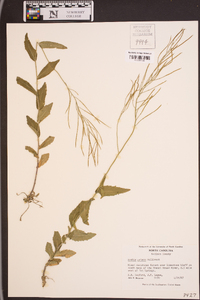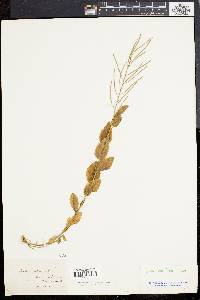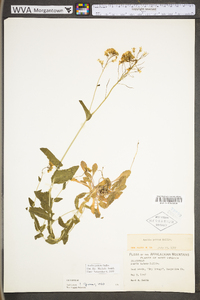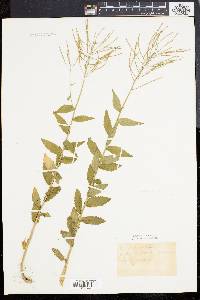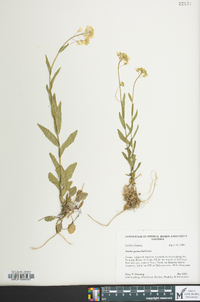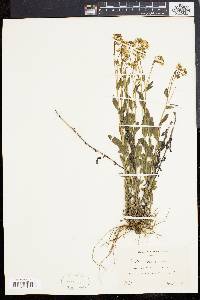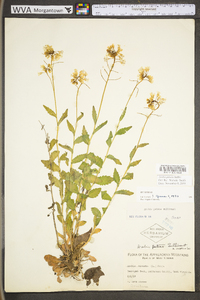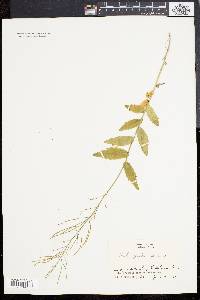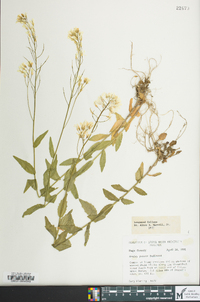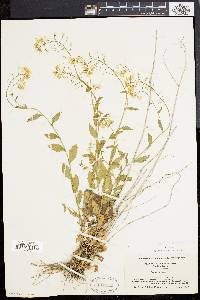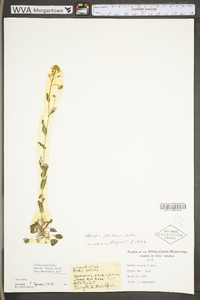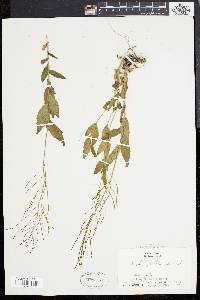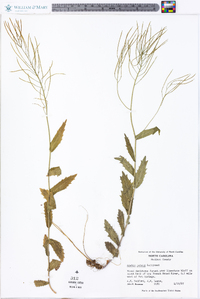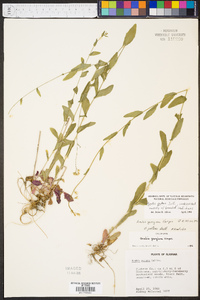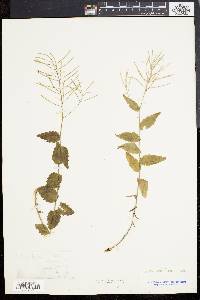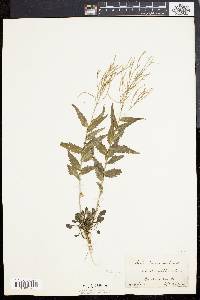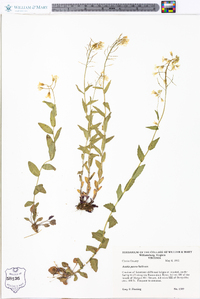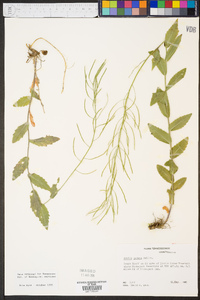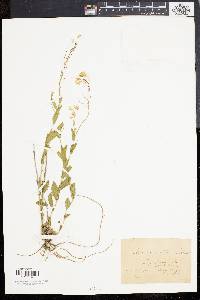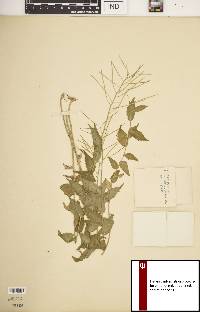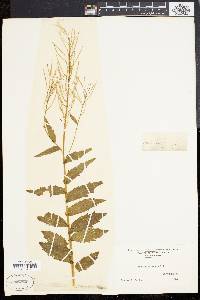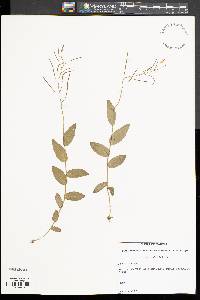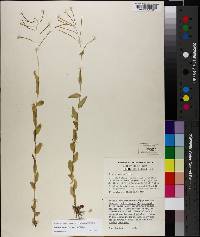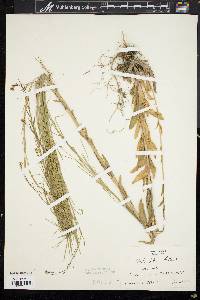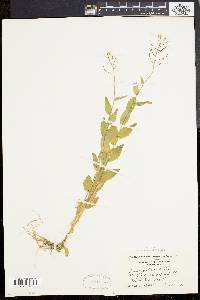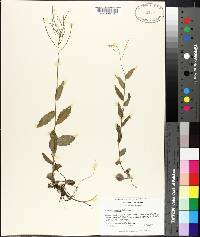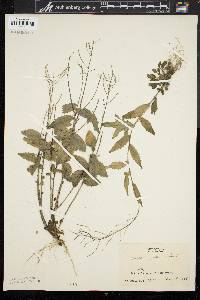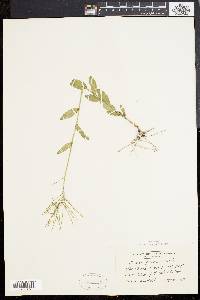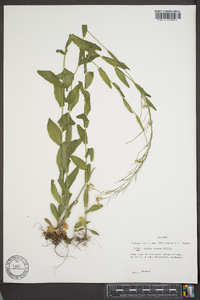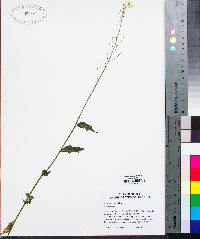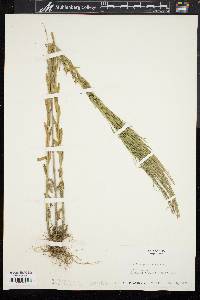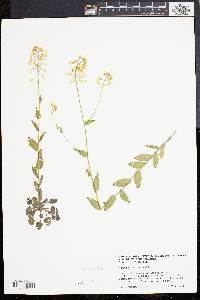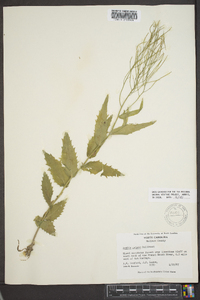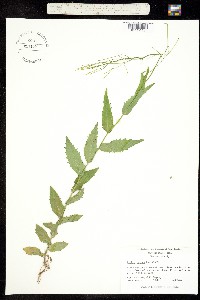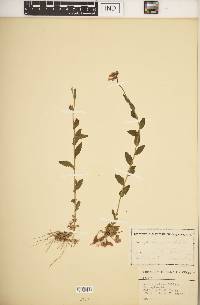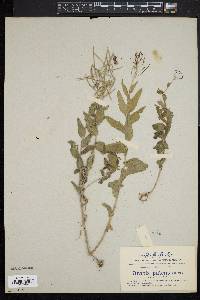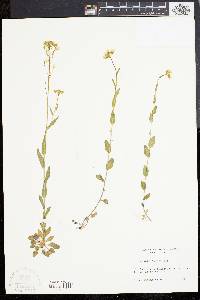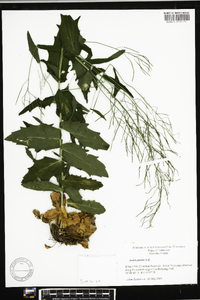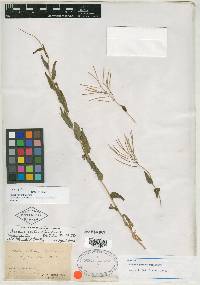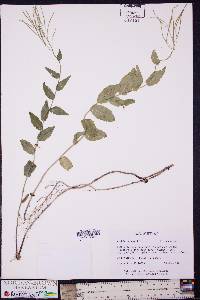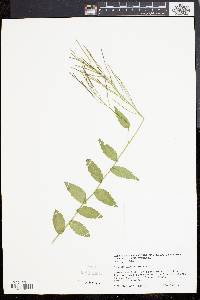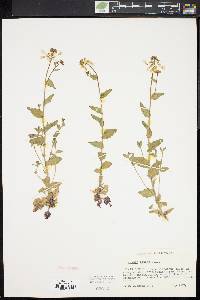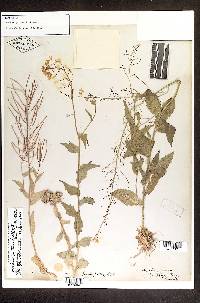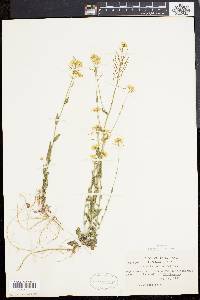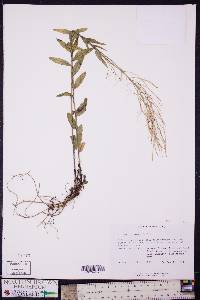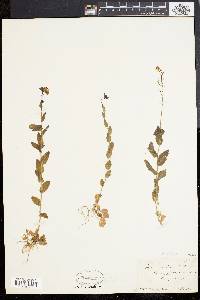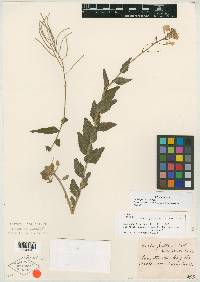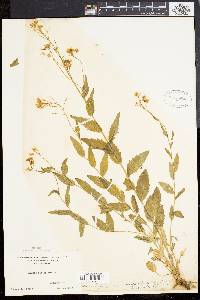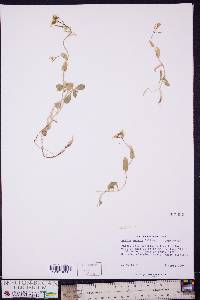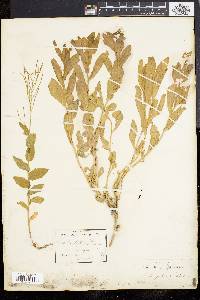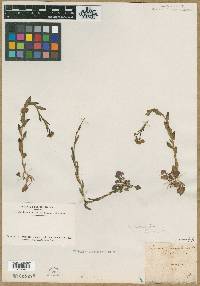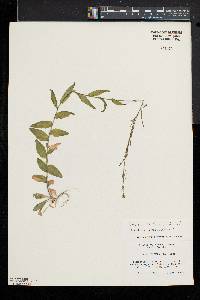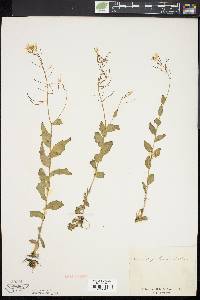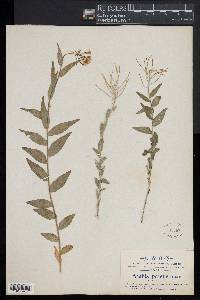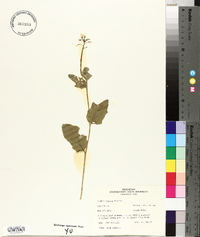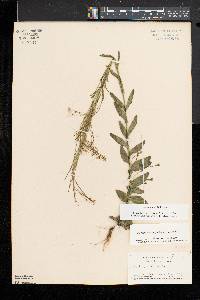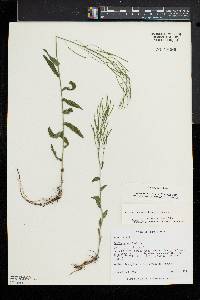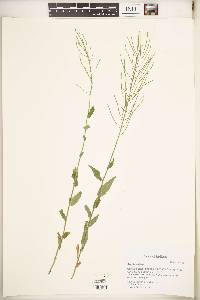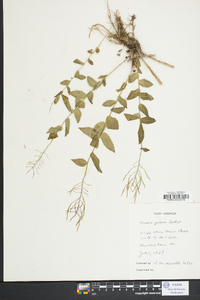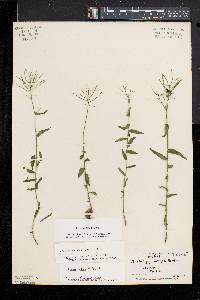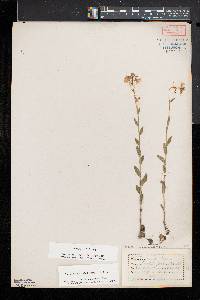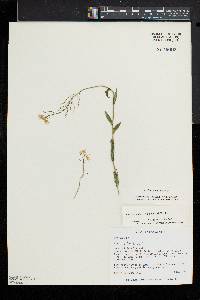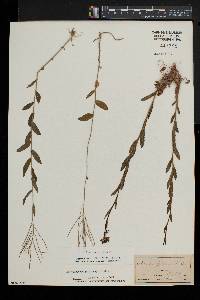Arabis patens
|
|
|
|
Family: Brassicaceae
Spreading Eared Rockcress
|
Biennials or, rarely, perennials; (short-lived, with caudex); usually densely hirsute (at least basally), trichomes simple (to 1 mm), sometimes mixed with stalked, forked ones. Stems simple or several from base (rosette), erect, often branched distally, (1.8-)2.5-4.5 (-5.5) dm, (hirsute at least basally). Basal leaves: petiole (0.7-)2-5 cm; blade usually ovate to oblanceolate, rarely cordate, (0.8-)1.5-3 cm × 5-17 mm, margins dentate or serrate, surfaces sparsely to densely pubescent, trichomes simple or forked. Cauline leaves (5-)8-20 (-27), (overlapping or not); blade ovate to oblong or lanceolate, (2-)3-7.5(-9) cm × (10-)13-25(-35) mm, base amplexicaul, margins usually dentate or serrate, sometimes entire, surfaces hirsute. Racemes branched. Fruiting pedicels ascending to divaricate-ascending, (7-)10-20(-24) mm, (glabrous or sparsely pubescent). Flowers: sepals oblong, 2.5-4.5 × 1-1.5 mm, lateral pair slightly saccate basally; petals white, spatulate, (5-)6-9 × 2-3.5 mm, apex obtuse; filaments 3-5 mm; anthers oblong, 0.8-1.2 mm. Fruits divaricate to erect-ascending, (not appressed to rachis), torulose, 2.2-4.6 cm × 0.8-1.2 mm; valves each with prominent midvein extending to middle or full length; ovules 16-28 per ovary; style 0.5-2 mm, (slender). Seeds narrowly winged distally, oblong, 1-1.6 × 0.6-0.8 mm; wing 0.05-0.1 mm. Flowering Apr-May. Rocky wooded slopes, shady stream banks, limestone ledges and bluffs; 0-500 m; D.C., Ind., Ky., Md., N.C., Ohio, Pa., Tenn., Va., W.Va. Biennial or short-lived perennial 3-6 dm, the herbage hirsute with simple hairs, or also some forked ones on the stem; cauline lvs lanceolate or lance-oblong to lance-ovate, 2-5 cm, usually rounded to the broadly clasping base, coarsely serrate chiefly below the middle, or the upper lvs entire, hirsute with simple hairs on both sides; pet white, 6-9 mm; pedicels at maturity widely ascending, glabrous, 10-16 mm; frs widely ascending or spreading, linear, flat, 2.5-4 cm נ1 mm, the valves sharply 1-nerved usually to the tip; seeds oblong, narrowly winged. Moist rocky woods; Pa. to Ind., s. to w. N.C., Ala., and e. Tenn. May. Gleason, Henry A. & Cronquist, Arthur J. 1991. Manual of vascular plants of northeastern United States and adjacent Canada. lxxv + 910 pp. ©The New York Botanical Garden. All rights reserved. Used by permission. From Flora of Indiana (1940) by Charles C. Deam I have found this species in two places only. In Bartholomew County it was growing on top of a limestone rock along Clifty Creek north of Hartsville and in Harrison County there is a colony of it in the talus of the ledges of the cliff along a side road along Blue River about a half mile north of White Cloud. It is very local. It has, however, been reported from Clark, Decatur, Jefferson, and Tippecanoe Counties. ...... Indiana Coefficient of Conservatism: C = 10 Wetland Indicator Status: N/A Diagnostic Traits: Rosette leaves crenate or dentate, to 7.5 cm long; stem leaves auriculate; petals 4, white, mostly 6–9 mm long; fruit pods flattened, 2.5-4.5 cm × 0.5-1.5 mm; seeds >1.25 mm long. |

